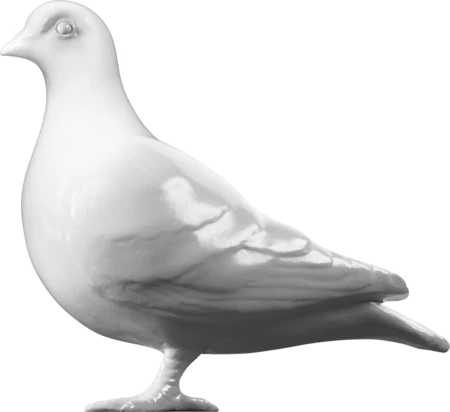Fashion — 1500-1599
Cap fragment, earflap
A woollen earflap or cheekpiece from the 16th century, once part of a knitted cap. The long lozenge or spearhead shaped ‘earpieces’ mostly survive separately from the caps, often with a cut at the top where it has been taken off. They were knitted separately in a tubular shape and stitched on either side of the head. However, since these long side pieces cover little of the ear and more of the jaw and neck under the chin, like a scarf, cheek pieces is a more accurate description.
After construction the piece was fulled (washed, beaten and felted) and napped (raising and trimming the pile) to produce a stiff, hardwearing fabric. Knitted caps were worn by men in London's business and working communities in Tudor times. They were designed to be warm and waterproof. A range of styles and qualities were available to suit the taste and pocket of the customer.
There were as many as 15-20 successive stages involved in making one cap and they are products of highly-skilled, professional workers. Bright colours such as blue or red were common, as were black and dark brown. Most of the caps are now shades of brown from long immersion in damp earth and would need dyed analysis to discover their original colour. Caps dyed red, sometimes with madder root, are often still vivid. Caps that were undyed have become a pale golden ochre colour.
The piece was bought by the London Museum in 1924. Workman in the early 20th century digging deep foundations for new buildings around the City of London found many pieces of clothing and textiles buried in the earth. Many are in a good state of preservation and may have been lost from wearers’ heads or discarded when they became unfashionable (from around 1570), thrown into the City ditch and cesspits. Unfortunately, because these were not formal archaeological excavations, any strata details or contextual material such as pottery that would help date the caps more closely were lost.
These caps are sometimes called ‘apprentice’ or ‘statute’ caps. In 1571 a statue was passed ordering every man over the age of six, except those of high rank, to wear a knitted woollen cap made in England on Sundays and holidays.
Some caps were trimmed with ribbons to imitate more expensive versions in silk. Wealthy Londoners wore headgear influenced by European fashions, and the bonnets (a cloth cap) from Milan, ornamented with ostrich feather plumes, aglets (metal tags) and brooches, were much in vogue.
TECHNICAL INFORMATION
Finished off at top and bottom with overstitch in same yarn; heavily fulled.
Yarn - Z spun, 2 ply.
7.5 stitches per inch.11 rows per inch. Munsell Colour Value 10YR 3/2. Fine velvety pile present. The ground yarn is paler than the pile, suggesting the cap was dyed after construction. Width 7 inches; length 4.75 inches.
- Category:
- Fashion
- Object ID:
- A26574
- Object name:
- cap fragment, earflap
- Object type:
- Artist/Maker:
- —
- Related people:
- Related events:
- Related places:
- Production date:
- 1500-1599
- Material:
wool
- Measurements/duration:
- L 180 mm, W 120 mm
- Part of:
- —
- On display:
- —
- Record quality:
- 100%
- Part of this object:
- —
- Owner Status & Credit:
Permanent collection
- Copyright holder:
digital image © London Museum
- Image credit:
- —
- Creative commons usage:
- —
- License this image:
To license this image for commercial use, please contact the London Museum Picture Library.

